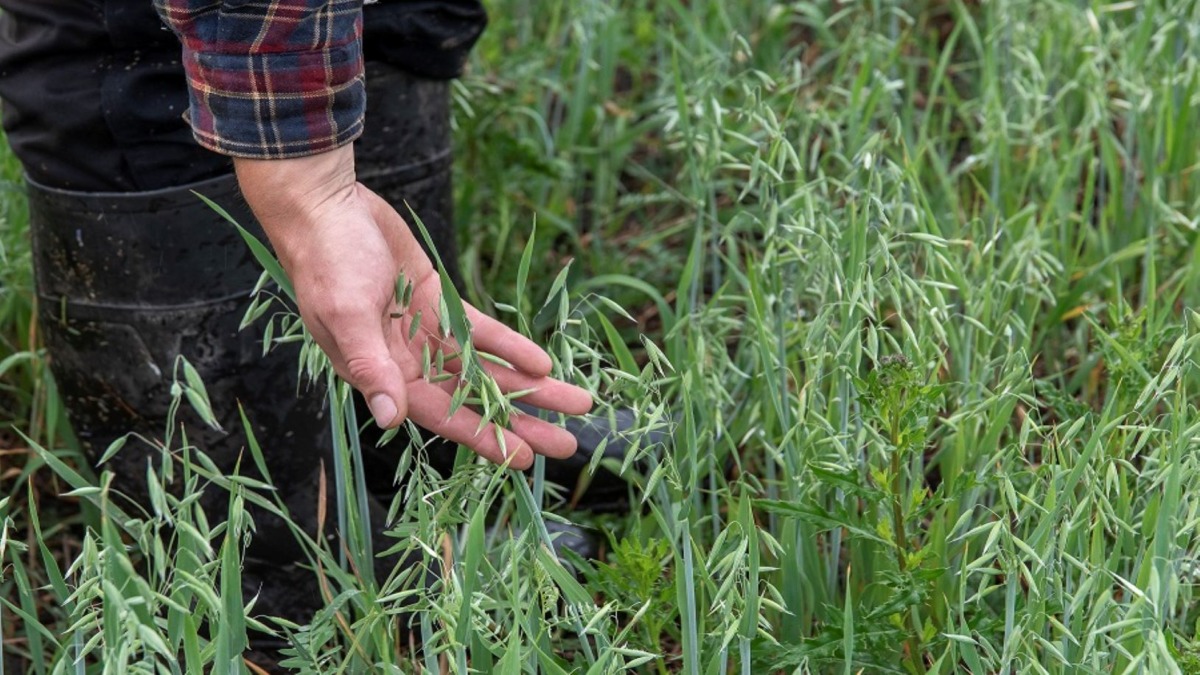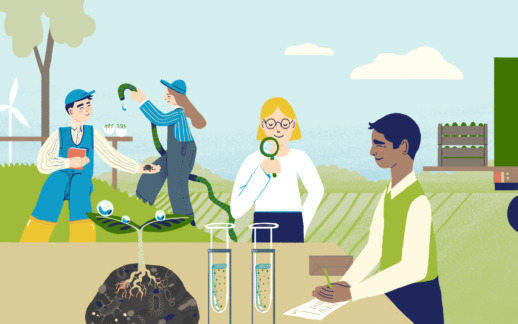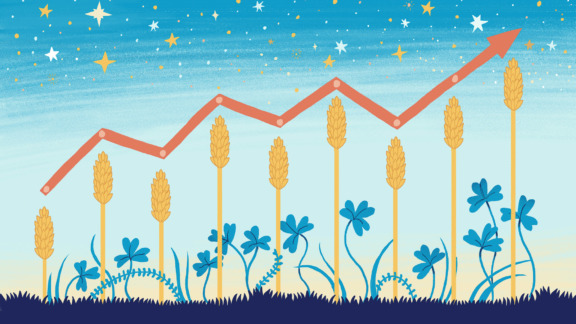Could voluntary carbon markets boost climate action in agriculture?
Could voluntary markets boost climate action and support farmers in increasing the carbon storage in agricultural lands? This question was widely discussed as BSAG brought together approximately 250 experts and stakeholders during the EU Green Week 2022. The speakers highlighted the integration of climate, environment and productivity goals.

The experts agreed that at best, carbon farming methods, like the use of catch crops or soil amendments, effectively improve productivity of fields, mitigate climate change and promote biodiversity, along with having relative benefits for water quality.
The hybrid event organised in SEB bank’s premises brought in about 20 listeners on site with 230 more listeners online.
Summaries of the presentations and links to the individual recordings
Kaj Granholm, Baltic Sea Action Group showcased the work done by the Carbon Action platform and especially the results of the LIFE CarbonFarmingScheme -project which worked to outline the prerequisites of the carbon market. Both the buyers and suppliers of the carbon credits in the carbon markets emphasise multiple benefits, which is encouraging from the point of view of developing the voluntary markets. Kaj Granholm’s presentation.
Paul Luu, from the “4 per 1000” Initiative that encourages soil carbon sequestration, brought in the global perspective and the multifaceted benefits of soil carbon sequestration. Luu also reminded that the reduction of emissions should always be the primary target. Finland is one of the many actors who have signed the initiative and Finland will also host the first 4 per1 000 Northern European conference in 2023. Paul Luu’s presentation.
“Learning from carbon credit pilots” – three case examples of carbon markets:
– Tanya Santalahti, manager of carbon removal operations at Soilfood, said that the interest towards carbon credits is growing amongst both farmers and potential buyers of the credits. In the Soilfood’s methodology, the carbon storage is guaranteed for only 20 years, but the reliability, comprehensibility, and the various benefits together with the repeatability of the method make it attractive to the buyers as well. Tanya Santalahti’s presentation.
– Jonah Ehmann, head of agronomical operations at the popcorn producer Nataïs, talked about the company’s producer premium based on the use of catch crops. This carbon farming program is still in the piloting phase and even though the company has scientifically determined the carbon sink units produced by the catch crops, the company has not yet decided on the commercial use of carbon credits. At the moment, their priority is that the production of popcorn is sustainable and that the soil is cared for. Jonas Ehman’s presentation.
– Markku Ollikainen, A professor at the University of Helsinki and the chairman of the Finnish Climate Change Panel showcased an example depicting carbon credit deals which had been adapted to the farmers preference for short agreements. In this case, the additional carbon sequestered by the carbon farming practise would be calculated with a factor proportional to the length of the deal (offset-ratio). Consequently, the same operation could produce differently priced credits depending on the length of the deal the farmer is ready to commit to. Ollikainen also acknowledged the multibeneficial nature of the practise, but he added that there is a lot of work to be done for this to be certified and considered in economic calculations. Markku Ollikainen’s presentation.
The final discussion and summary
After the opening speeches there was an open discussion that included questions from the live audience as well as from the international audience via chat. Watch the conversation here.
Laura Höijer, the CEO of the Baltic Sea Action Group and the moderator for the event summarised the day’s discussions in the following three main messages:
- The soil’s potential to store carbon must be utilized to increase carbon sinks in addition to cutting emissions. Carbon farming has high potential to sequester carbon in soils. In agriculture, we need to make full use of the potential of mineral soils to store carbon and adopt more climate friendly farming methods on organic soils.
- Carbon farming in agriculture must be done in a way which also improves soil health and food productivity and is favourable for biodiversity and water quality. A variety of measures is proven to being able to provide both carbon offset and these other benefits. We must consider multiple objectives together.
- Farmers need economic support, information and advice to adopt carbon farming. CAP subsidies should be more adapted to the performance of the farm and the voluntary carbon credit schemes should be continued as they are needed to scale carbon sequestration and to support farmers in this transition.As Ms. Höijer summarizes the value of the event:
“We have covered different dimensions of the carbon market and carbon farming and I really think that we, the speakers and audience together, have made a valuable contribution to the European discussion on carbon farming and to the EU Green Week. The discussion will surely continue.”
CONTACT US

Kaj Granholm
Project Manager, Regenerative Agriculture, EU affairs



